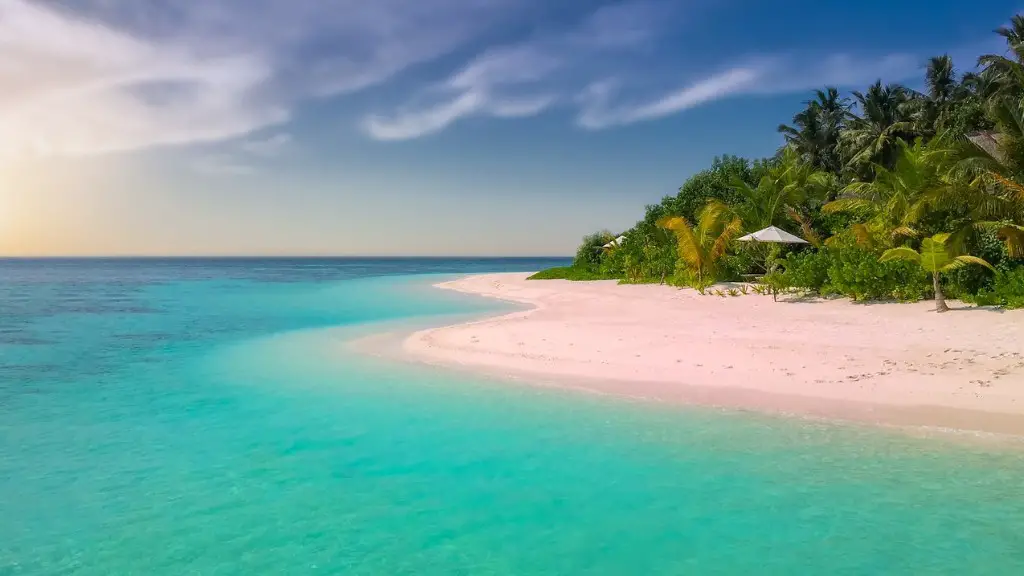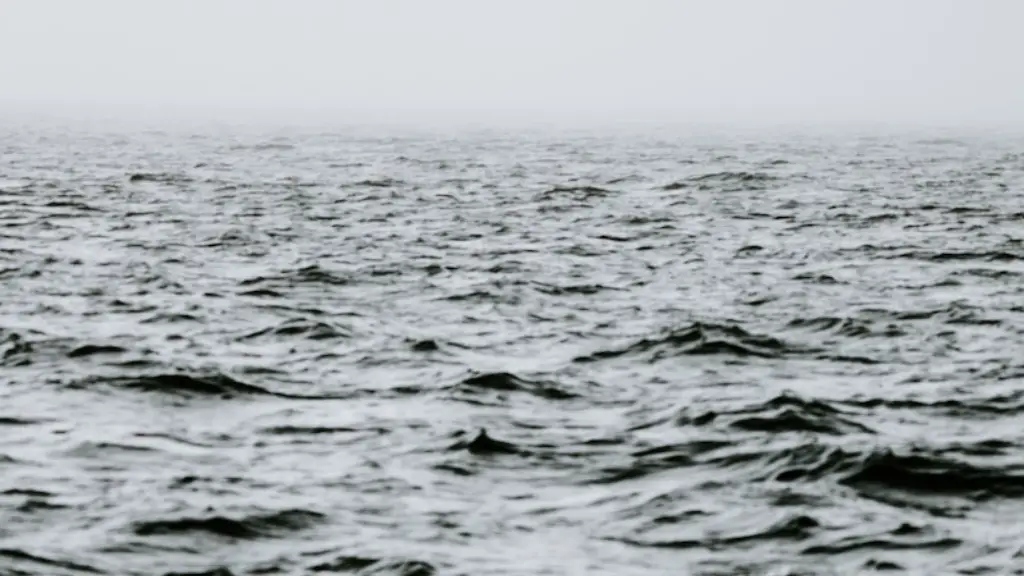The South China Sea is one of the world’s busiest shipping lanes and a key source of hydrocarbons. It is located in the western Pacific Ocean, near the eastern coast of China and the Philippine islands. The region is significant because it is an important area for fishing, shipping, and oil exploration, making it a major global resource. In addition, the South China Sea holds waters held by several nations, including China, the Philippines, Vietnam, Malaysia, Brunei, Taiwan and Indonesia, creating the potential for international disputes, over both maritime rights and marine resources.
The South China Sea contains an estimated 11 billion barrels of oil and 190 trillion cubic feet of natural gas, making it a highly valuable piece of real-estate in the global fuel market, making it an inviting target for all of the involved nations. It is estimated that as much as 1/3 of all global shipping passes through it. The seas are also a hospitable habitat for numerous species of wildlife, and the region supports fisheries and coral reefs, which boosts the economic opportunity for the countries that lay claim to its waters.
The geography of the South China Sea is determined by hundreds of small islands, reefs, and atolls, most of which are uninhabited and are part of the ‘Spratly Islands’. It contains the Paracel and Spratly Islands, which are claimed by multiple nations but are largely under control of the People’s Republic of China, who have converted them into military outposts. This has been a source of contention in the region, leading to disputes over who holds the rights to the resources in the South China Sea. China has largely declared the region to be its own regional waters, while other countries claim the region is international waters and thus claim they have a right to its resources.
The South China Sea is known for its strategic importance, as it serves not only as the gateway to the Pacific and Indian Oceans, but also holds vast deposits of oil and natural gas. All of the involved countries have economic, political, and historical ties to the South China Sea. All of this makes the South China Sea a highly contested and sought-after resource, and disputes over who should control its resources remain a central issue in the region.
Legal Issues
International law relating to the South China Sea has become highly contested, as several nations have staked a claim to its resources and vast fisheries. Nations have come to a series of agreements and conventions, such as the United Nations Convention on the Law of the Sea, aiming to reach a consensus on its governance. Since all nations in the region are signatories to it this has helped avoid open conflict, but tensions remain as all nations seek to protect their interests.
At the center of the dispute is the area known as the ‘nine-dash line’, an area of the South China Seas which China claims as part of its territory. Several challenges to this claim have been made, but China has remained steadfast in asserting its ownership of the area. This has caused much opposition from other countries who hold historical and legal claim to the same area. Lawsuits are regularly filed in order to protect or expand the claims. The most recent developments involve the Philippines and China, though other nations have made claims as well.
The disputes over the nine-dash line have become a major point of contention between many nations, and so far the issue has been unresolved. Several attempts at peace talks have been made, but most have been unsuccessful. The continued dispute has led to an increase in military activity in the region, with all countries having increased their presence in order to protect their interests.
Environmental Impact
With so much of the region’s resources at stake, it is also important to consider the environmental impacts that development would cause. Ongoing ocean and air pollution, as well as damage to sensitive habitats, are a major concern to all parties involved. The South China Sea is home to the world’s premier coral reefs, and is in danger of degradation and destruction due to the presence of large ships and the human activities it supports. This is especially a concern as many of the world’s endangered species are concentrated in the area, and any significant damage to the environment would be devastating.
Recently, several nations have created laws and restrictions aimed at protecting the environment and limiting the damage done to the region’s fragile habitats, though international cooperation is needed to ensure that the laws are respected. Additionally, governments and international organizations have put in place research and monitoring programs in order to ensure that any damage done is kept in check. The region is also home to a variety of shark species, most of who are in danger of depletion due to over-fishing, and so governments are working to find sustainable fishing practices.
The South China Sea is a sensitive ecosystem, and so its protection and conservation must be a priority for all nations involved. Its resources are of great importance to all countries involved, and the region’s valuable wildlife must be respected if balanced development is to be achieved without irreversibly damaging the environment.
Developing Sustainable Practices
Developing and maintaining sustainable practices in the South China Sea is vital for all involved nations. Achieving a balance between economic activity and environmental protection requires the cooperation and involvement of all parties, and so initiatives have been developed to better manage and protect the region’s resources. These initiatives involve the creation of marine protected areas, the implementation of research and monitoring programs, and a commitment to the sustainable use of the region’s resources.
The South China Sea is home to many of the world’s most valuable fisheries, and this has led to a need for improved management and conservation of the resources. Several research and monitoring programs have been set up in order to ensure that development and exploitation activities occur in a sustainable manner. The local communities near the South China Sea also benefit from these initiatives, as improved management of fisheries enable them to make a living, while at the same time maintaining the health of the ocean.
The responsibility of protecting the South China Sea does not just fall on the countries bordering it. International organizations have been tasked with ensuring sustainable development in the region, and have put forth various programs and initiatives aimed at protecting the area and its resources. Several non-governmental organizations have also offered their services to the cause, raising both awareness and funds for various projects.
Regional Cooperation
Due to the high tensions and competing interests in the South China Sea, cooperation between the nations involved has been slow to develop. The involved parties have been cooperating on a number of initiatives, such as joint patrols of the region and the sharing of intelligence, in order to ensure the safety and security of the region. However, progress towards a unified solution has been slow, as the various nations all have different interests at stake.
In order to move towards a unified solution, all parties must be willing to compromise and find common ground. Despite differing opinions on maritime rights and jurisdiction, all nations must agree that the resources of the South China Sea must be used in sustainable and responsible manner. This could be achieved through the formation of a unified agreement with all the nations taking part, or through the various countries creating bilateral agreements with each other.
The South China Sea is a major source of global economic activity, and a crucial region for the nations that border it. The involved countries must cooperate in order to ensure its resources are used in a sustainable manner, as this would lead to economic and environmental benefits for all parties involved. Cooperation between all nations must be fostered if a resolution is to be achieved, and if this is done the South China Sea can be a source of prosperity for all involved.
International Response
The international community has voiced a great deal of concern over the South China Sea dispute. Both the United Nations and the United States have called for a peaceful and cooperative resolution, urging all parties to adhere to international law and refrain from further exacerbating tensions. In addition, numerous NGOs and other advocates have organised campaigns to raise awareness and support the protection of the environment. International media has also been a powerful tool in raising awareness and keeping the issue in the public eye.
In recent years, the Association of Southeast Asian Nations (ASEAN) has also managed to get involved in the dispute. They have put forward several proposals to encourage collaboration among the parties and help foster peace and cooperation. Through their involvement, ASEAN has attempted to push for a consensus and foster productive negotiations, but so far with limited success.
As the dispute in the South China Sea rages on, the international community must remain vigilant in pressuring all parties to adhere to international law and to use peaceful means to resolve the conflict. The protection of the environment and the sustainable use of resources is also a key issue that must continue to be addressed. Without the support of the international community, it is unlikely that a peaceful solution to the dispute will be found.
Conclusion
The South China Sea is an economically and environmentally important region, and its resources are of great value to all of the involved nations. However, the ongoing disputes between the various countries over maritime rights and resources have made the region a source of international contention. It is vital that the environment be respected and preserved, and that the resources be used in a sustainable way in order for the region to continue to provide prosperity for all those involved. The involvement of the international community is key for a peaceful resolution to be found, and it is up to all parties to adhere to international law and ensure the sustainable use of the South China Sea’s resources.





